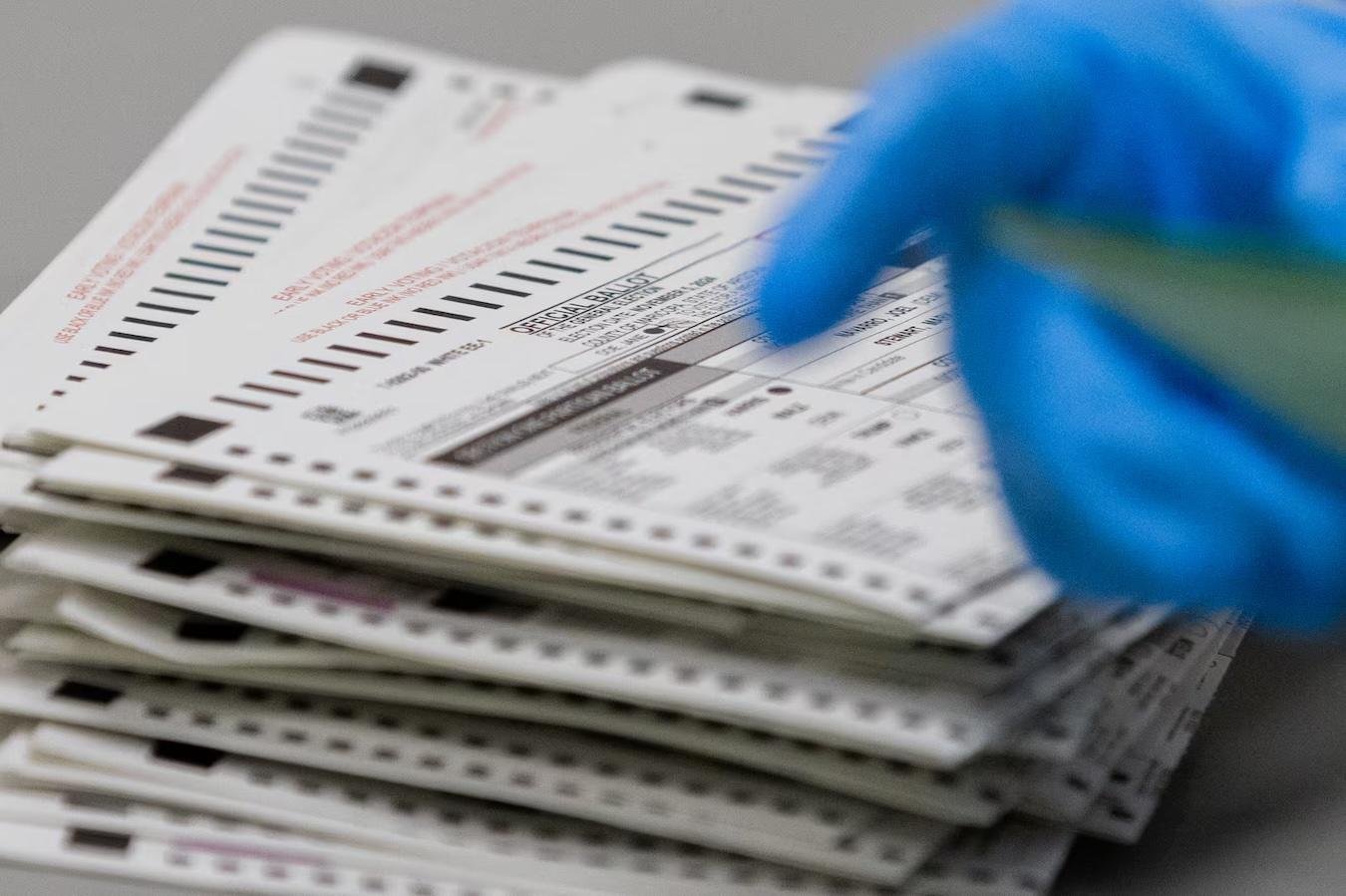Business
Trump’s Push to Eliminate Ballot Barcodes: Impact and Implications for Voters

This article was originally published by Votebeat, a nonprofit news organization covering local election administration and voting access.
President Donald Trump has issued a new executive order that significantly expands the executive branch’s authority over the administration of elections in the United States, a move that experts anticipate will be met with legal challenges. Central to the order is a directive banning machine-readable barcodes and QR codes on ballots, aimed at restructuring voting systems across many jurisdictions.
Trump’s rationale suggests a return to traditional, paper-based voting. Yet, data indicates that most Americans already utilize paper systems. Barcodes and QR codes, often seen as essential components for efficient vote counting, could lead to complications if their use is abruptly curtailed. The abrupt elimination of these technologies may not only slow down election results but also fail to enhance the accuracy of the vote tally.
The order raises critical questions about the role of these codes in the electoral process and the reasoning behind viewing them as threats to election integrity.
Understanding Barcodes and QR Codes in Voting
Voting systems in the U.S. often include hand-marked paper ballots, where voters fill out their choices and feed the completed ballot into a tabulation machine. However, some jurisdictions have adopted digital systems that use touchscreens. After making selections, these systems print out a paper ballot featuring both human-readable text and a corresponding barcode or QR code. This method allows for a double-checking mechanism; voters can review their choices before insertion into counting machines.
Many jurisdictions find that barcode-integrated systems provide a faster counting process without compromising accuracy, as these systems can still interpret marked selections alongside coded entries.
Key Aspects of the Executive Order
Trump’s executive order forms part of an effort to influence the election process through the U.S. Election Assistance Commission (EAC), an agency that establishes voting system guidelines. The order mandates the EAC to revise the federal Voluntary Voting System Guidelines (VVSG), prohibiting QR and barcode usage unless necessary for accommodating voters with disabilities. The EAC is required to amend these guidelines within 180 days, potentially impacting existing voting system certifications.
The VVSG, while labeled “voluntary,” serves as a critical standard for many states, influencing their election equipment choices and making compliance close to obligatory in practice.
On Thursday, a coalition of civil rights organizations formally challenged the authority of the EAC to comply with the order, highlighting legal constraints on modifying the guidelines.
Concerns Surrounding Barcodes and QR Codes
The president’s order is rooted in the debate over voter-verifiable paper records that combine traditional ballots with technological enhancements. Election security experts advocate for systems that ensure voters can confirm their selections and provide an audit trail. Many states have embraced such frameworks; however, some continue to rely on systems lacking paper records.
Trump’s order aligns with concerns voiced by critics regarding the inability to verify the machine’s reading of barcoded votes as accurately reflecting voter intent. Instances of discrepancies, such as a 2023 incident in Northampton County, Pennsylvania, add fuel to this debate, demonstrating how machine-generated codes can be misrepresented.
The Impact of Trump’s Directive
Approximately 1,954 counties across 40 states utilize voting machines rendering QR codes or barcodes, with major urban areas like Los Angeles and Philadelphia likely to face significant operational changes. Implementing the executive order may compel these jurisdictions to either upgrade or replace their voting equipment, resulting in considerable financial implications. Previous analyses suggested costs for removing QR codes in Georgia could reach as high as $66 million.
Budgets for some counties, such as Portage County in Wisconsin, have already been strained by recent upgrades to comply with evolving voting technology standards. The financial strain could be exacerbated by rushed transitions to align with the new directive.
Current Regulations and Future Implications
The most recent VVSG, issued in 2021, emphasizes the necessity for a verifiable paper trail for voting systems, permitting barcodes only if accompanied by human-readable text. The upcoming adjustments based on Trump’s order may subsequently necessitate significant changes in equipment and operational protocols.
Counties will be tasked with not only replacing costly machinery but also retraining personnel and informing voters about the forthcoming changes, all in the lead-up to the November elections. These transitions could introduce unnecessary confusion and delays in the election process, illustrating the challenges that could arise from such regulatory shifts.


















